[Updated: October, 23 2017]

SWLing Post reader, Bob, recently emailed the following question:
“My wife and I live on a boat and plan to go to the Bahamas this season. We cannot afford to install a SSB radio – costs $7K to $8K. But we need to be able to hear the weather reports and forecasts
So we are thinking of just getting a SW radio receiver.
A friend has purchased a Grundig satellite 750 but it does not seem to have the range, and he has not been successful connecting an antenna.
I think I need a SW radio I can connect to an antenna. I am thinking of a CommRadio CR-1 ?
What do you think?”
Thanks for your question, Bob. I’m going to give you a few suggestions, then open this one up to your fellow SWLing Post readers, as I suspect there may be some with experience setting up and using an HF receiver on the water.
Important: As Bryan commented, just after I posted this review, readers should note that none of the receivers/transceivers I offer here are designed for maritime use, thus they lack features like GMDSS, DSC and DGPS and have no extra protection from the corrosion of salt water on their circuit boards.
Receivers
For my part, as an inlander, I think you’re on the right track with the CommRadio CR-1 or CR-1a. Not only will it cover the entire HF spectrum (for HF weather fax, RTTY and many ship-to-shore communications), but it also covers VHF (64 – 260 MHz) and UHF (437 – 512 MHz) frequencies. The CR-1 is also a very stable receiver and covers all of the modes you’ll need (upper side-band, lower side-band, AM and FM).
If you’re space conscious, fortunately the CR-1 has a very small footprint; you could mount it nearly anywhere. The CR-1 also has a built-in battery pack and can run/charge on an array of DC voltages (6-18 VDC).
You may also wish to consider the Alinco DX-R8T (see our review) or the Icom R-75. The Alinco has a detachable face plate, thus may also be easily accommodated. The Icom R-75 is a great receiver for your application, as well, but is larger than the CR-1 and does not have a detachable face plate option.
Again, I think you’re on the right track with the CommRadio CR-1.
Another option to consider…general coverage ham transceiver
Here my advice is going to sound a bit like that which I gave reader Phil recently: I would strongly urge you to get your amateur radio license.
It’s a simple process–even elementary kids do it–and the license no longer requires a knowledge of Morse code (CW), (although I am a devotee of code and would suggest pursuing a knowledge of this at a future date).
Moreover, the testing material will make for an excellent primer on radio communications, so if something goes wrong in the middle of the ocean, you’ll be better prepared to diagnose and fix it.
Additionally, in case of an emergency, a ham radio transceiver would provide yet another means of calling SOS to a community that is well-versed in handling emergency communications.
Check out this previous post for suggestions on getting your amateur radio license.
Ham radio transceivers also offer excellent stability and the modes you’ll need to decode any voice or digital mode.
Keeping in mind that you’ll need a transceiver 1) in the same price range as the CR-1, 2) that is compact or has a detachable face plate, 3) has a general coverage receiver, and 4) is rated for 100 watts of output power, I would suggest the following:
- The Alinco DX-SR8T. While not a small radio, this rig has a detachable face plate (with optional extension cord), a sensitive receiver and is a great value at $520 new. I favorably reviewed the receiver-only version of this radio two years ago. I’ve heard that the receiver in the DX-R8T is identical to the one in the DX-SR8T. I would purchase this from Universal Radio or Ham Radio Outlet.
-
The Elecraft KX3 or Elecraft KX2 are two of my favorite general coverage transceivers–I own both. They can both be powered from a modest 12 VDC source and/or internal batteries. Both are limited to QRP (12 or 15W) transmit power, but an external portable 100W amp can be added. Both are exceptional radios in terms of performance.
- The Kenwood TS-480SAT. Also worth considering, this transceiver has an excellent receiver with better filters and a smaller footprint than the Alinco DX-SR8T. Though it costs nearly twice as much as the Alinco, it’s on sale until 11/30/13 for $974 from Universal Radio.
- The Yaesu FT-857D. This is probably the most compact among the transceiver options listed above. The FT-857D has been on the market for many years and has proven itself a capable mobile transceiver. The detachable face plate could easily be mounted anywhere you wish. The Yaesu FT-857D can be purchased at Universal radio or Ham Radio Outlet.
-

The Icom IC-7000 is an excellent choice for maritime operation. It’s possible to find a used one at a good value.
Also consider buying a good-quality used general coverage transceiver from a reputable retailer like Universal Radio, Ham Radio Outlet, The Ham Station or Amateur Electronic Supply. Search for the three models listed above, but I would also consider the Icom IC-706MKII and the Icom IC-7000.
Of course, you will need a good HF antenna for any of these options to work, even the CommRadio CR-1; a radio, after all, is only as good as its antenna. The type of antenna you can use will be limited by your ability to mount it on on your boat: some are limited-space wire antennas, others are whip antennas. Make sure the antenna will resonate on the frequencies important for your maritime travels.
Fortunately, most of the retailers listed above have experience in this capacity.
Portables
If I were on a boat, I would also carry a portable shortwave radio as a backup. Some to consider are the Tecsun PL-660, Tecsun PL-880, Sony ICF-SW7600GR or the Sangean 909X. All of these have SSB mode and good sensitivity, selectivity and stability, although the Sangean ATS-909X requires an external antenna for optimal sensitivity.
There are also a few compact travel radios worth considering as well, although sensitivity generally isn’t as good as the larger, full-featured portables mentioned above. I would consider the CountyComm GP-SSB, Digitech AR-1780, or the C. Crane CC Skywave SSB as a nice spare radio to tuck away on board.
Hope this helps, Bob! Happy sailing!
SWLing Post readers: if you have experience in maritime HF operation, we welcome your comments and suggestions…

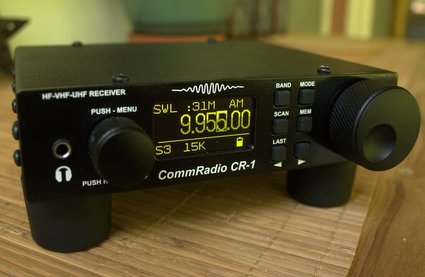
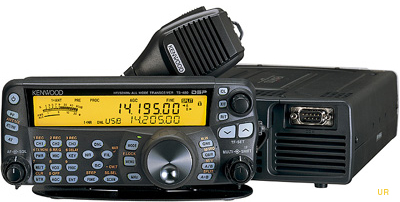
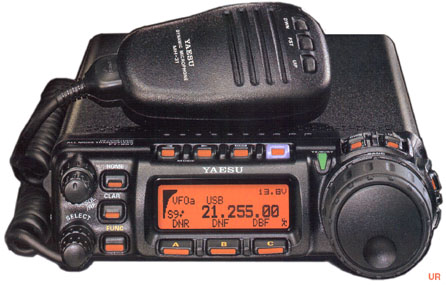
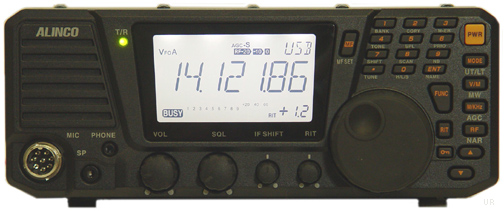
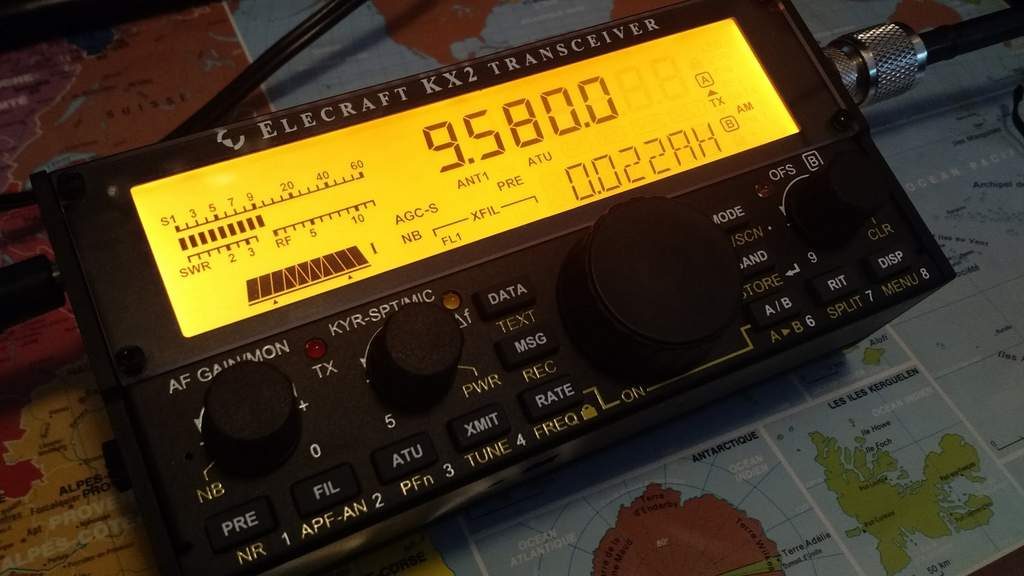

An icom m802 package can be had for less that $3k.. but the installation may run up anywhere up to $5k hence the OP’s ~$8k cost and request for alternatives… the bulk of cost (for pretty much anything in a boat) is always in installation..not the cost of electronics, as boats have unique issues regarding their ground.
As a sailor, when faced with a budgetary issue of installing a marine SSB radio system, IMO the answer is most definitely not “get a ham radio and your license”.. the answer is most definitely “get a good SSB portable with an external antenna input”.
To get valuable weather resources such as Chris Parker (www.mwxc.com), weatherfax and eavesdop on atlantic nets, a quality portable SSB receiver is all that is required, provided that some sort of external antenna is used.
In my case, in the Bahamas, a 25ft length of wire semi permanently rigged to the flag halyard presented a strong and clear enough signal to reliably get the morning weather, and any weatherfax data i needed (along with the laptop).
My radio back then was the Satellit 800, and this year that behemoth will be replaced with a Tecsun PL880… such a setup is ALL that is required.
Hallo I have a Tecsun 880 that came with m boat, ana suggestion/link/ informations of what I can do with it in order to use it in open sea, weather communication thanks
I am a sailor whos has crused and lived aboard. I recently pass mt Tchnition clace and will take a general class test this week. I have on board a Kaito Ka1103 radio but would not recomend it except as a cheap back up. I bought and Alinco DX-SR8 transciver and amd very happy with it. In order to not to buy a tuner I bought an OPEK hvt-400B whip antenna. It has holes in the side and a jumper cable that tunes it to frequency. No tuner is needed, though it only covers frequencys 10 through 80 meter. Which for now is all I feel I need. I have not used it on the boat yet but am thinking I can mount the whip on the stern pushpit and use it and the life lines for a ground plane. The antenna was $70.00 about $30.00 worth of cables a mirror mount to attch the antenna to the push pit I have $112.00 in accessories. The transiver was $519.00.
I started off just listening and then found out I just couldn’t keep my mouth shut so went ham. Its some of the best money I have spent. Doug
That’s great feedback, Doug. Thanks for sharing your experience with the DX-SR8.
Cheers,
Thomas
Since my last post I have found that I can send and recieve from a ham who also has a marine ssb. He patched me through which I suspct may not have been legal. Still it would have been legal to pass along a message so that I could get a message to a friend with marine band. He sent me a message that I was able to recieve on my ham radio. Where there is a will there is a way. Also my signal was a little weak sending so I found my boat already had a ground plate on her bottom with a couple of bolts coming through so I hooked a copper strap to it from the stern push pit. Now I am booming out at 100 watts. REALLY GOOD STUFF.
I’ve been an avid SWLer since the late 60s, but it wasn’t until recently that I found the last radio I’ll ever need to buy. I purchased the Icom IC-7000 HF/VHF/UHF Multi-Band Transceiver. This radio is compact, versatile and very powerful. It can be purchased new with antennas, and set up for under 2k. The IC-7000 can listen to about 2/3 of the entire radio spectrum in all modes, and with a minor modification, can transmit on about 90% of that. I consider this radio to be a high end amateur radio which does require a license if you wish to transmit. Keep in mind that even the best radio in the world, is no more useful than a brick, if you don’t have a good antenna system, it’s all about the antennas. The IC-7000 uses 2, one for VHF/UHF and another for HF. Proper installation can help protect this or any unit from the environment. As this unit can be modified to transmit on marine frequencies, it is not type-approved for such transmissions and may be a violation of law to do so, but in the event of an emergency on the water, you will use whatever means at your disposal to get help. Consider getting an Amateur Radio license, it’s not that hard to do, and it’s a lot of fun. With the right radio you will be guaranteed many hours of radio listening and communication enjoyment…
Scott–
Thanks for your endorsement of the IC-7000. I’m plotting to write an article for the new Spectrum Monitor on ham transceivers that make for great HF receivers. The IC-7000 will be on that list along with the Elecraft KX3 and several others. I’ll also include good used general coverage radios as well–in fact, I spent many years SWLing with my IC-735.
Great thing about purchasing a transceiver is what you mention–if you get your ticket, you can use it to talk across the planet. Makes for an appropriate purchase choice.
Thanks for your comment!
Cheers,
Thomas
7-8 Grand for a marine SSB radio? They go for about 2 grand…
http://www.thegpsstore.com/Icom-M802-SSB-Commercial-Radio-P2193.aspx?gclid=CJPUw_Dd-rkCFZFFMgodeBEAWg
The SSB costs $2K to $3K but they are expensive to install as they need a big earth installed plus a lot or wiring. That is the big expense. Bob
Hands down I would go with the Icom IC7200. It was designed with Icom’s marine division and is moisture/humidity resistant. It’s not a high end amateur xcvr so it’s reasonably priced. It has built in DSP filtering as well.
Great Blog!!
The only problem with the radios mentioned above is they lack maritime features such as GMDSS, DSC and DGPS plus within a year or two I guarantee the inner circuits and casing will rust from constantly being exposed to the saltwater environment.
Maritime radios like the Icom IC-M802 are fairly cheap – a packaged system featuring the radio, antenna tuner, and cables will run about $2000 new and will last many years when installed properly.
Thanks, Bryan–I’ve noted your comment in the original post.
-Thomas
Might I suggest that in addition to buying an amateur radio transceiver, such as the Alinco or the Kenwood models mentioned in the article that you also get your amateur radio license. With a little study, it’s not all that difficult, and you’ll be able to use that transceiver to call for help as well as to listen. You might also enjoy talking to folks while you’re out at sea.
You can get my Technician and General class study guides for free by going to http://www.kb6nu.com